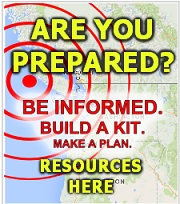
Fall/Winter Local Weather Outlook

By Garret Hartung,
Wilkes East Neighbor, Meteorologist
After yet another warmer-than-average summer, the transition to cooler, wetter, and more active weather is well underway across the Pacific Northwest with some of the highest peaks already seeing their first snowfalls of the season.
The fall and winter often feature our most impactful weather events here in western Oregon. October through December is our typical southerly windstorm season, where strengthening low pressure systems moving in from the Pacific can bring heavy rainfall and breezy southerly winds to the region. While rare, if these systems take the proper path and are strengthening on their closet pass to Portland, stronger damaging winds could develop in the Willamette Valley with wind gusts exceeding 60 mph in the strongest of storms. If one of these storms happens to come into the forecast sometime this season, it’s a good idea to prepare by securing outdoor items, preparing an emergency kit with flashlights and batteries, and keeping devices charged. During strong winds it’s best to remain in an interior room of your home and away from windows.
As we head deeper into the winter, the effects of another weak La Nina will be felt across the Pacific northwest. La Nina is characterized by cooler than average sea surface temperatures in the eastern equatorial pacific. This typically favor a blocking ridge of high pressure in the Gulf of Alaska, which tends to bring cooler northwesterly flow into the region. While variability is highest with weak La Ninas, on average it favors wetter-than-normal conditions and slightly cooler temperatures for the Pacific Northwest. This is usually great for the snowpacks around the region so long as we maintain an active pattern through the early spring.
While there isn’t a strong signal for the intensity of potential cold snaps, it is likely that we will have one or two encounters with colder Arctic air coming through the Columbia River Gorge, most likely in January and February. This usually brings strong east winds that can be accompanied by snowfall and/or freezing rain. So once again its always a good idea to be prepared for potential power outages or travel impacts if a colder winter storm starts to be forecasted later this winter.
















